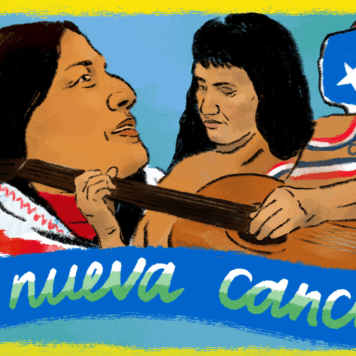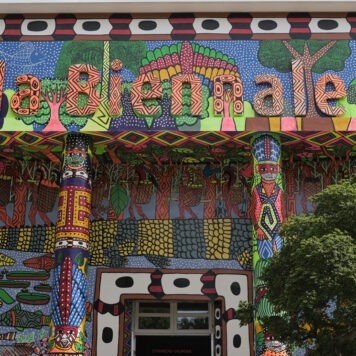In early August, black-and-white images of women I knew started appearing on my timeline with the hashtag #ChallengeAccepted and #WomenSupportingWomen. It seemed to be a nice but meaningless exercise to post a good selfie with a vague caption about feminine energy. I politely ignored the nominations directed towards me. I had a detached regard for the #ChallengeAccepted moment, until I found out it was about Turkish femicide.
I noticed my Turkish friends had not posted a black and white image of their faces. Sena had been a co-worker, who now lived in the U.K. and Alaneur was a former classmate at LSE who went back to Istanbul. I messaged them to exchange greetings but the conversation quickly veered into a discussion about how a political campaign about the deaths of their countrywomen had become an aesthetic trend.
Sena grew up hearing stories about honour killings in Eastern Turkey. She grew up a little outside of Ankara, “I don’t want to say it was a modern city… but it was a modern city”. Femicide and domestic violence were village problems to Sena, something that happened elsewhere, not in her city. But still, she knew to be cautious in her “modern” [read: Secular] city. She would only walk and socialise in busy areas. She would not walk alone too late. She knew that if she took a taxi, she should take a picture of the licence plate to send to a trusted person. She knew if she was on a bus and there were no other women, she should get off the bus, she should keep moving, she should make sure she could run.
Sena and Alaneur feel safe in Turkey; it’s their home. But they also know that their safety is based on a series of choices they make. Their safety is conditional to their obedience to a paranoia that teaches them that they are not immune to gender-based violence in Turkey.
Sena shared with me that her friends from around the world saw shades of the realities of being a Turkish woman within their own experiences, “People kept on saying ‘yes, it happens here too’… it was annoying. I know women experience some of this everywhere, I know they don’t always get justice. But the difference in Turkey is that men can get away with it and we don’t talk about it”.
“I know if I die or get attacked in Turkey, the state, the media and society will ask ‘What did she do to deserve that?’ That will be the conversation. I won’t be the victim in that story, I will only be the villain and they will try and find every excuse to make that man or boy who hurt me the innocent person. That’s the only story I have ever heard in Turkey”.
Turkish women and the Rules of Engagement
Turkey’s continual silence on violence against women is deafening. And it provides a stark contrast to the Turkish state’s strident use of Turkish women as billboards to political ideologies that further disseminates the brand of the state. But Turkey is currently at a socio-political crossroads with an unclear political ideology to underpin its national narrative.
Turkish women have begun to voice uncertainty of what rules to follow and what constitutes the ‘ideal Turkish woman’. Sena and Alaneur share that they were both born in a largely secular Turkey but grew up in a society that was negotiating a new relationship to Islam. This makes it especially dangerous for Turkish women who are unsure of how to govern their behaviour in public. Turkish women are trying to navigate how to succeed and thrive whilst a political and ideological schism grows in their country that especially seeks to govern the private and public behaviour of women.
#ChallengeAccepted: A mirror to a very Turkish problem
The mainstream phase of #ChallengeAccepted celebrated womanhood with vague mantras as to empowered femininity. Likewise, the Turkish state has always professed to support women but with vague and conditional socio-legal policies. Confronting conversations about gender inequalities and violence against women are largely ignored in Turkey in favour of the pageantry of apparent gender equality.
In 1924, Mustafa Kemal (aka Ataturk or ‘Father of the Turks’) purported to have liberated Turkish women. .Ataturk wanted to create a new, ‘unveiled’ Turkish woman that emulated and transcended traditional European models of ‘femininity’. The idealised Turkish female citizen became a visible symbol of the modernity of the Turkish state. Turkish women who conformed to the Kemalist ideology were rewarded by the Turkish state with social and political capital. Yet Turkish women did not universally experience greater autonomy. The vast majority of the rights promised by the Kemalist reforms in the 1920s to mitigate gender inequality weren’t even codified into Turkish law until 2001. Kemalist reforms also did not offer institutional or cultural change to dismantle processes that allowed men to act unimpeded from attacking and killing women. The Kemalist state mainly supported women in publicising their apparent liberation with the strict condition they stridently uphold the values of a modern Turkey.
Non-Kemalist women excluded from state institutions but who had the same desire for social and economic enfranchisement were left without protection or support. Women who continued to wear veils sought university education and public positions – but were denied due to their refusal to conform their behaviour or appearance to codes mandated by the Turkish state. As a result, a shadow Islamist state was slowly erected in Kemalist Turkey with its own rules and social norms for Turkish womanhood. It proposed an alternative Turkish womanhood and it included an avenue for veiled women to thrive. But it also created a separate set of rules as to how a Turkish woman should govern and regulate her behaviour, especially in public spaces. Before the rise of Erdogan, Islamists were given limited access or control of the public space in Turkey. But Erdogan, like Ataturk, has used Islamist women as billboards for the apparent values of his new Turkish state and as emissaries for his new code of conduct.
However, the clash of political ideologies in Turkey has not subsided with Erdogan’s continued political ascendency. Turkish women now have to endure a landscape where they are required to simultaneously conform their behaviours to Islamists and Kemalists codes of conduct in order to access opportunities and remain safe in Turkey. As Turkish women navigate public and private spaces they engage in constant code-switching depending on their environment. This code switching is not opportunistic, it is a necessity for Turkish women to remain safe in a country where a woman will be blamed for acts of violence against them.
#WomenSupportingWomen: Kemalist and Islamist women facing the same patriarchy
Violence against females has collapsed the distinction between the vulnerabilities of Kemalist and Islamist women. Women without veils, having accepted the Kemalist state, believed that they had the protection of the Kemalist ideology with all its modernity and supposed enfranchisement of modern Turkish womanhood. Islamist women who weren’t previously afforded enfranchisement of social and economic capital assumed a new protection would be afforded to them under the rise of the Islamist elite. But the continued prevalence of femicide throughout Turkey has revealed that the protections afforded to Turkish women whether Kemalist or Islamist is limited. Femicide is now being recognised as a Turkish problem.
The #ChallengeAccepted campaign’s use of black and white photos was to replicate the faces of dead Turkish women in newspapers. It was a recognition that femicide could happen to a Turkish woman whether she was a Kemalist or an Islamist. The #WomenSupportingWomen hashtag has fully realised its nomenclature in Turkey as Turkish women have begun sharing stories and resources with each other to combat femicide. As Alaenur shares “social media allowed women to get more vocal about their personal experiences and seek support from their communities.” Alaneur is hopeful that “This kind of mass movement [will be] effective in terms of influencing political decisions or at least moulding public opinion”.
But Turkish women continue to live in segregated communities of Kemalist and Islamist society. In Turkey the cost of not complying with the codes of one or both is a punishment from one side or both – and those punishments can include social exclusion, physical assault and death. Turkish women continue to remain vulnerable in a state that acknowledges their existence, celebrates their empowerment – but offers little recourse in protecting them from violence. Both Sena and Alaneur share that they hope for a better future for Turkey but they both used almost identical words to describe the current discourse on femicide in Turkey: “it’s mainly superficial, it doesn’t engage in the deeper crisis and so much more work needs to be done.”














